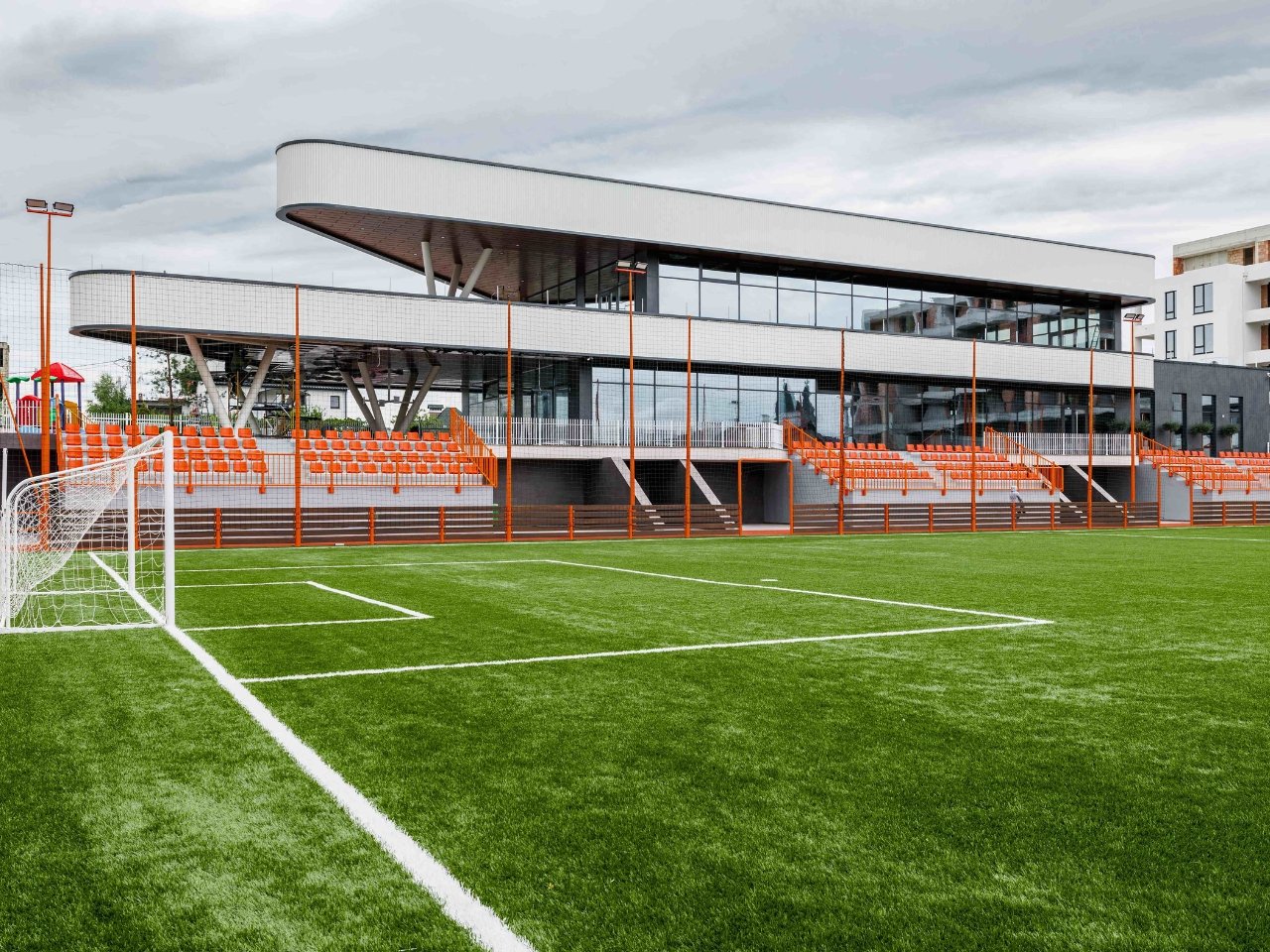Picture this: you drop your kid off at football practice, and instead of scrolling through your phone in the parking lot for an hour, you head inside to a yoga class, grab a coffee with other parents, or hit the gym while watching your little one train through floor-to-ceiling windows. This isn’t some futuristic fantasy. It’s exactly what’s happening at Moldova’s first solar-powered sports centre, and honestly, it’s making us rethink what community spaces can be.
LH47, Moldova’s largest architectural firm, just completed this remarkable project in Durlești, just outside the capital Chișinău. What started as a straightforward kids’ football training facility turned into something far more interesting: a multi-layered community hub that runs partially on sunshine and actually makes sense for how families really live.
Designer: LH47
The genius here isn’t just the solar panels (though those are pretty cool). It’s that architect Serghei Mirza and his team at LH47 actually thought about the entire ecosystem of a children’s sports program. Mirza and his team recognized a fundamental truth: kids never show up to football practice alone. Parents are always there, waiting. So rather than designing a building where parents kill time in the parking lot, they created a space that transforms that waiting period into something valuable—a chance for parents to rest, connect with other families, or stay active themselves.
That simple observation shaped the entire building. Instead of creating one giant space where everyone gets in everyone else’s way, they designed independent circulation routes for different user groups. Kids have their path, parents have theirs, coaches move freely, and staff can work without navigating through crowds. It sounds obvious when you say it out loud, but how many buildings actually function this way?
The site itself presented a challenge that became an opportunity. With a five-meter elevation difference across the slope, the building appears deceptively modest from the entrance (just two stories), then reveals its full three-level height from the field side. This terraced design lets the structure nestle into the landscape rather than fighting against it, using natural topography for stability and drainage. Smart, right?
Inside, the programming is equally thoughtful. The main level houses classrooms and a café with panoramic views of the pitch (because who doesn’t want to sip their latte while watching practice?). Upstairs, adults get their own fitness zone with boxing and yoga spaces. And the lower level, carved into the slope, contains locker rooms and concrete stands designed for comfort and clear sightlines. Every detail serves the people using the space.
Then there’s the sustainability piece, which feels refreshingly practical rather than performative. Solar panels on the roof generate part of the building’s energy needs, significantly reducing operating costs. A rainwater harvesting system handles irrigation and maintenance. These aren’t add-ons or greenwashing, they’re integrated into the building’s DNA from day one.
Aesthetically, the football club breaks away from the boxy, utilitarian sports facilities we’re all used to. LH47 opted for biomorphic lines, inclined columns, floating balconies, and transparent façades that create a sense of lightness and movement. Trees are woven into the landscape design to provide natural shading. The architecture feels alive, which makes sense for a space dedicated to movement and activity.
Mirza acknowledges the project wasn’t easy. Between the sloping terrain and the complex, multi-layered program serving different user groups simultaneously, the engineering coordination had to be meticulous. But he sees this as the crucible where strong architecture is forged. For LH47, the work goes beyond designing buildings. It’s about designing emotions and experiences. The aim here was to create an environment where people feel both comfortable and energized, where the space itself enhances how you feel while you’re in it.
That last bit resonates. Good design should make you feel something, whether it’s calm, energized, inspired, or all of the above. And in an era where so many public buildings feel generic and soulless, it’s refreshing to see a project that prioritizes human experience alongside technical performance. Moldova might not be the first place that comes to mind when you think about innovative architecture, but projects like this prove that groundbreaking design can happen anywhere. With its 2,018 square meters of thoughtfully programmed space, this sports centre sets a new standard for what community infrastructure can be: sustainable, beautiful, functional, and genuinely designed for how people actually live.
The post Moldova’s Game-Changing Sports Hub Brings Soccer and Solar Power Together first appeared on Yanko Design.

